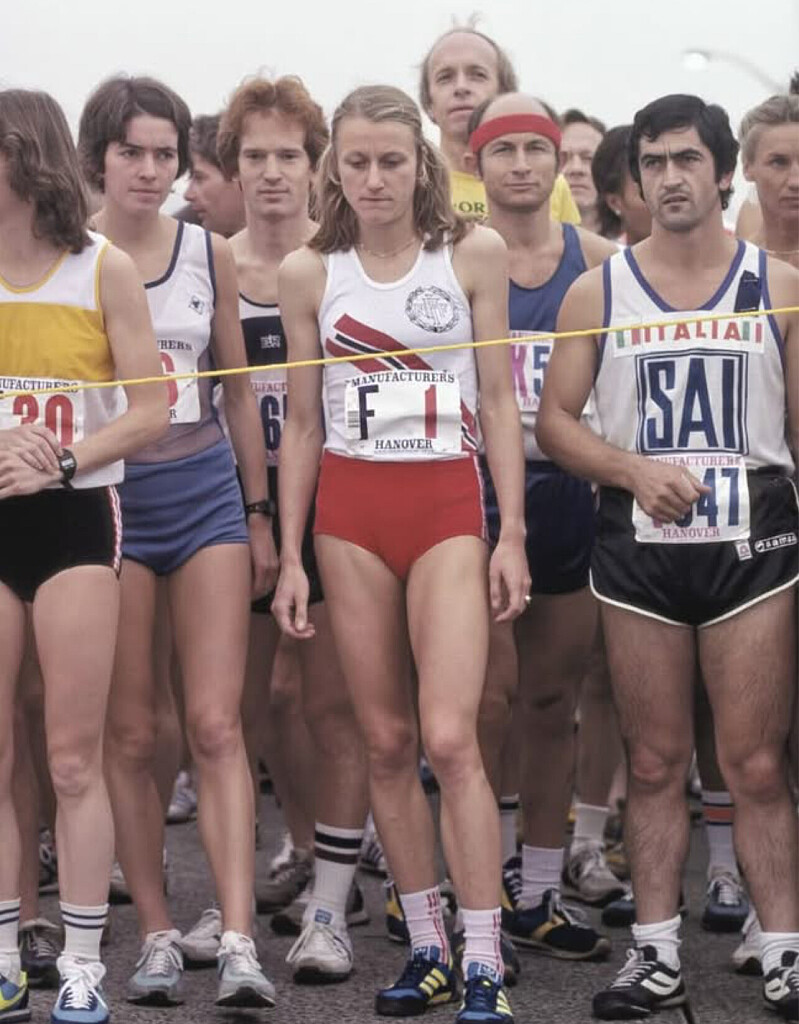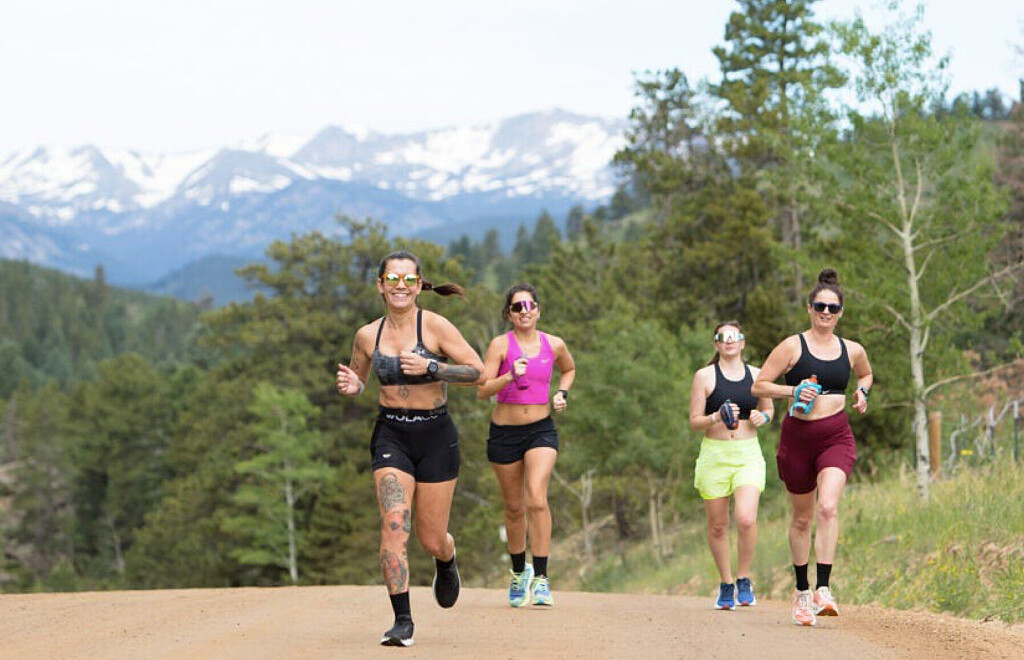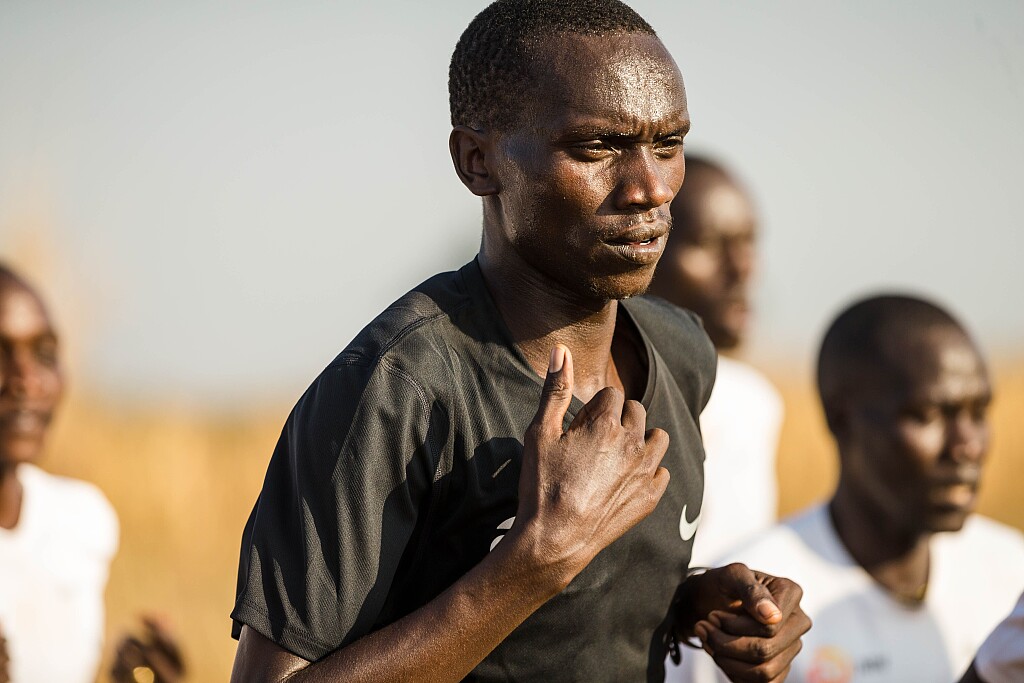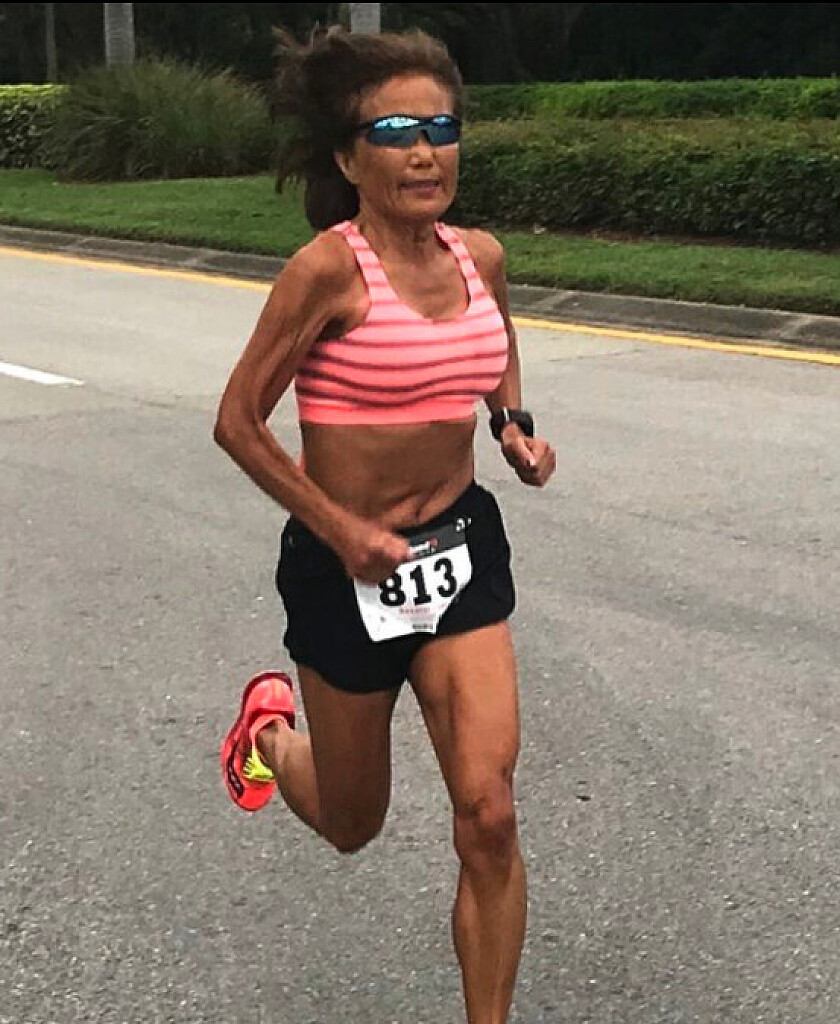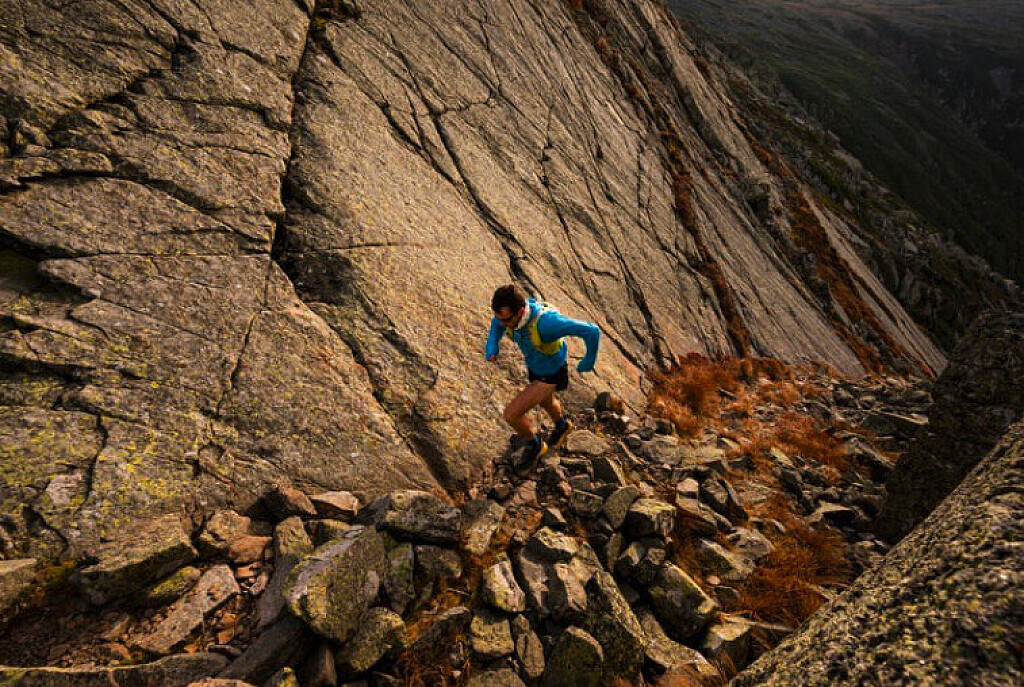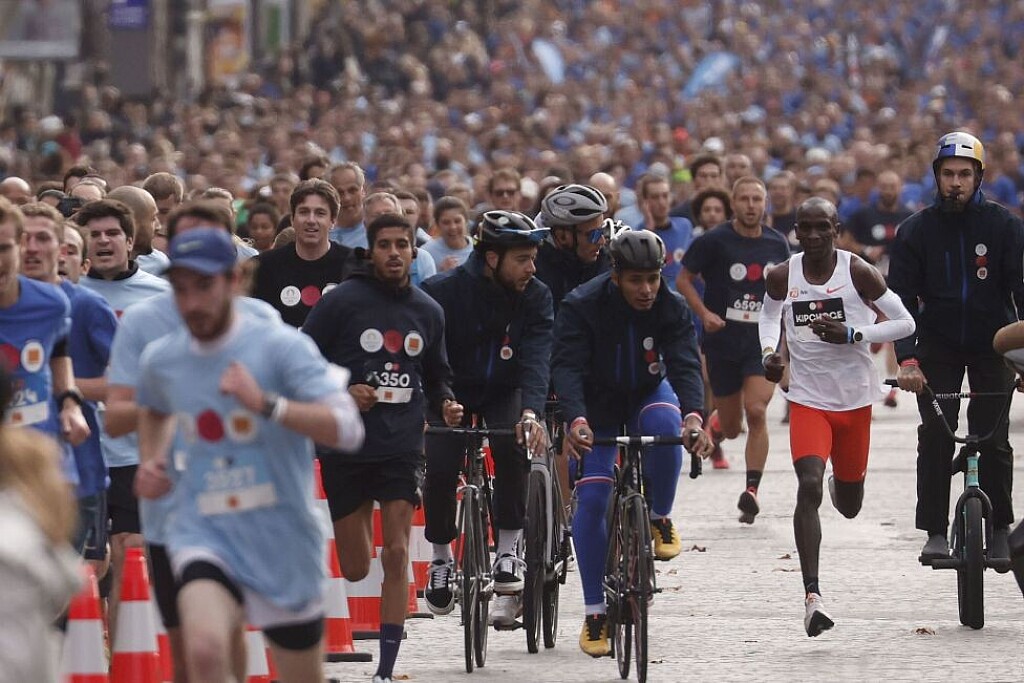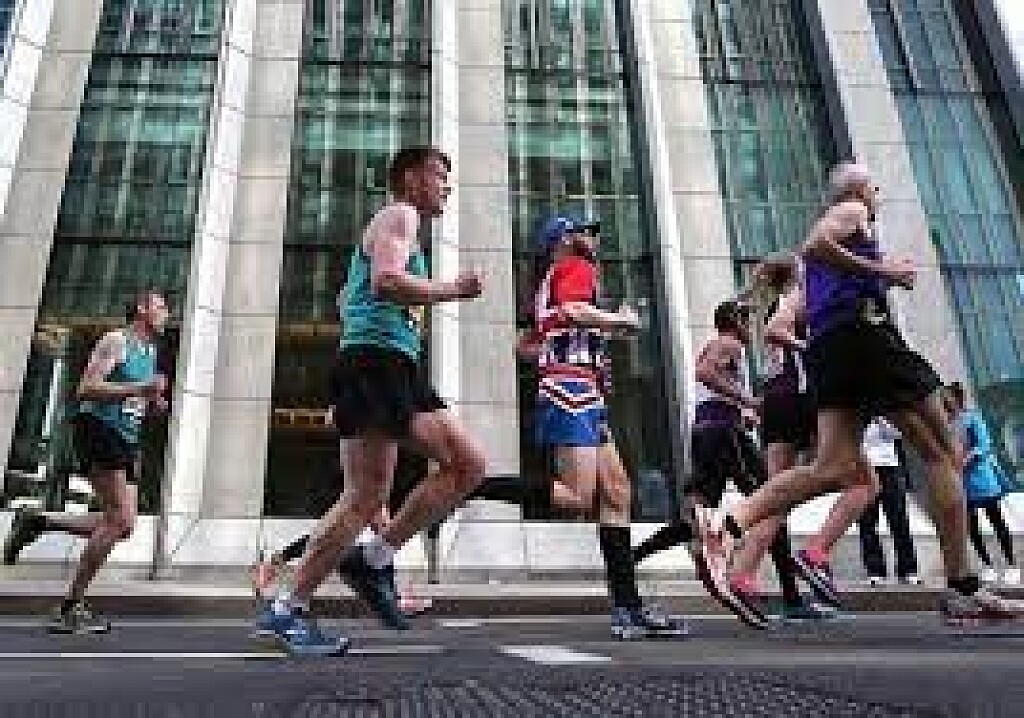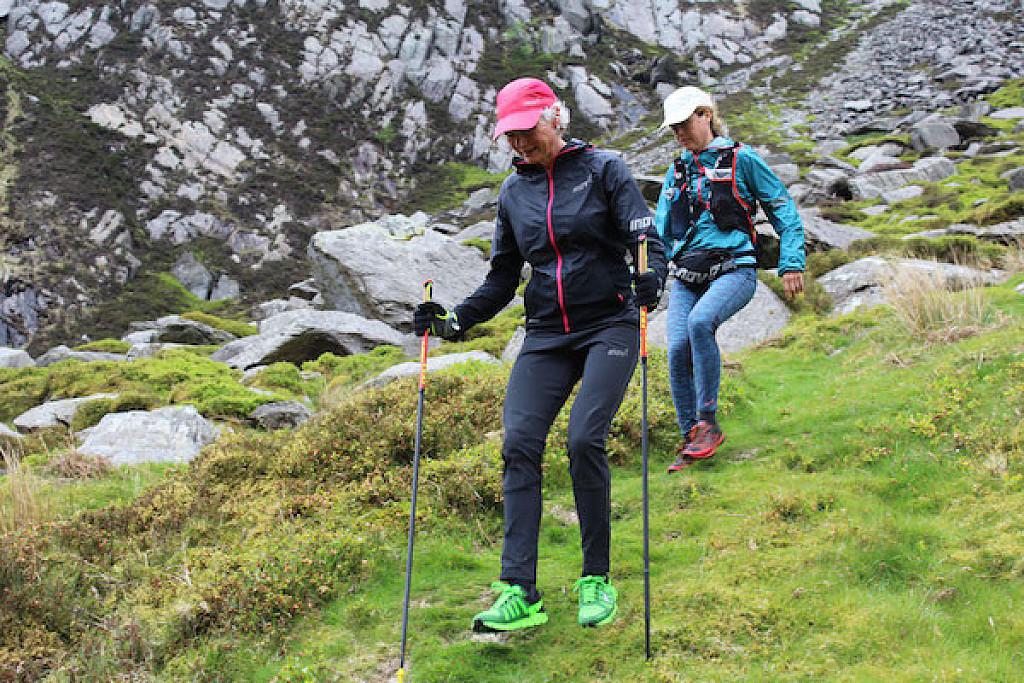Running News Daily
Running News Daily is edited by Bob Anderson. Send your news items to bob@mybestruns.com Advertising opportunities available. Train the Kenyan Way at KATA Kenya and Portugal owned and operated by Bob Anderson. Be sure to catch our movie A Long Run the movie KATA Running Camps and KATA Potato Farms - 31 now open in Kenya! https://kata.ke/
Index to Daily Posts · Sign Up For Updates · Run The World Feed
Articles tagged #TRAINING ADVICE
Today's Running News
Grete Waitz The Runner Who Changed Marathoning Forever
On a crisp October morning in 1978, an unassuming schoolteacher from Norway stepped up to the starting line of the New York City Marathon. Grete Waitz, a world-class middle-distance runner, had never raced beyond 3,000 meters. That day, she would not only cover 26.2 miles for the first time but also redefine women’s marathoning in a way no one could have predicted.
An Accidental Marathoner
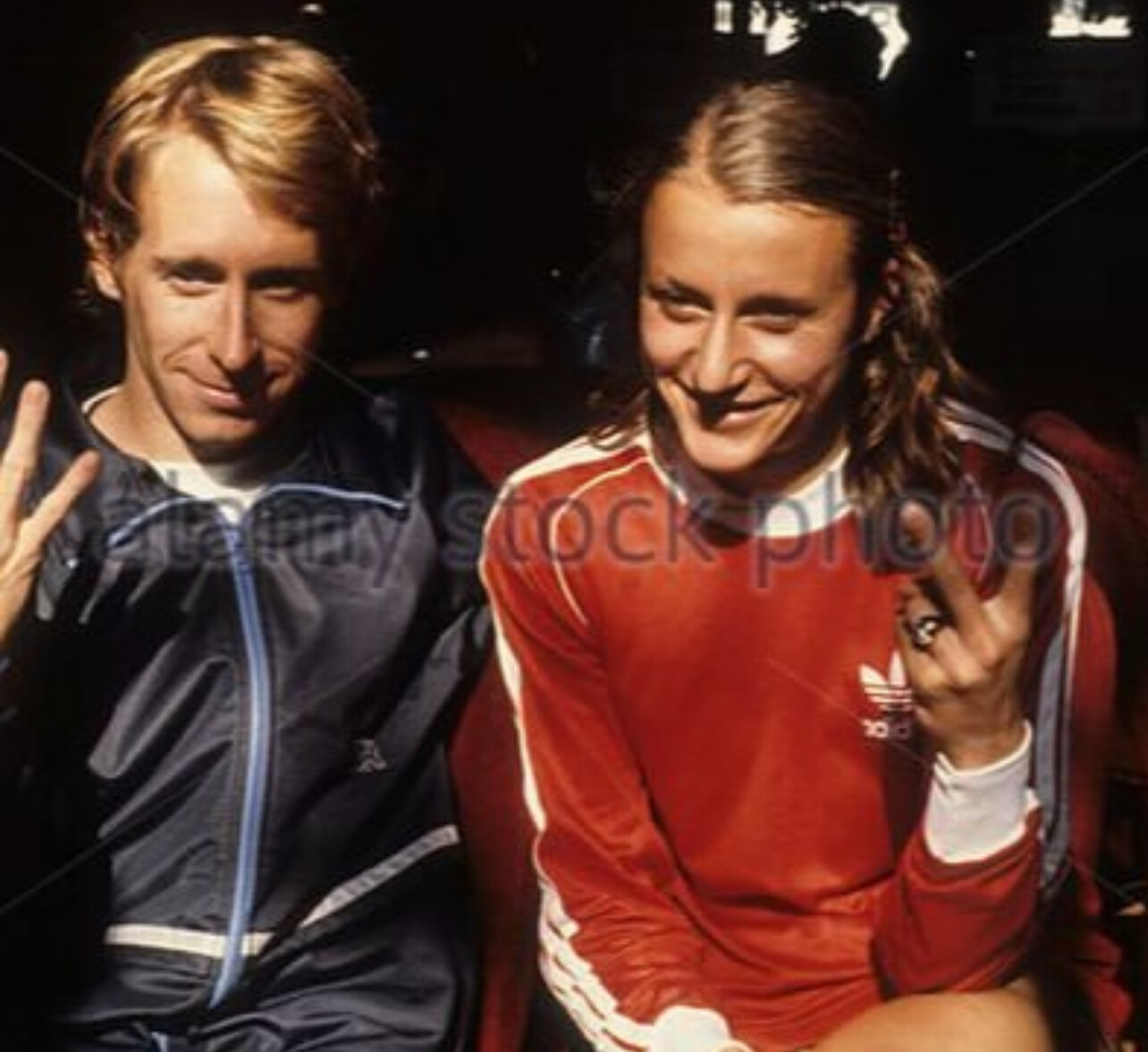
At the time, Waitz was a highly accomplished track athlete, having competed in the 1972 and 1976 Olympics in the 1,500 meters. Her husband and coach, Jack Waitz, believed she had the endurance for the marathon and convinced her to give it a try. The New York City Marathon, then in its third year of running through all five boroughs, was growing in popularity, with nearly 10,000 entrants that year—including 1,240 women, a significant number in an era when women’s distance running was still fighting for recognition.
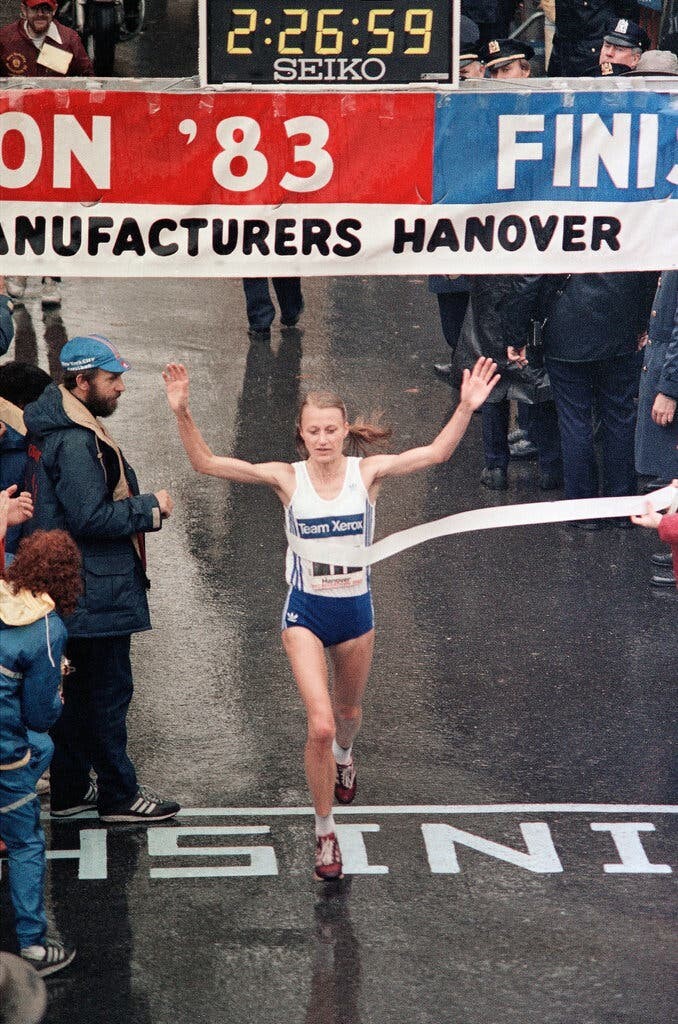
Waitz arrived in New York with no expectations, mostly treating the experience as an experiment. She was given bib “F1,” but that number did not signify any previous success in the marathon—it was merely assigned based on her status as a female elite athlete.
A Race for the Ages
Unlike today’s marathons, where elite runners typically start separately, in 1978, all competitors—professional, amateur, and first-timers alike—began together. The masses surged forward, and Waitz, running with a mix of excitement and nerves, settled into a steady pace.
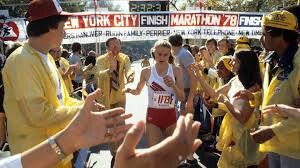
She was strong early on, but by mile 18, she was frustrated. She had no idea what she was doing, she later recalled, and even threw a cup of water at her husband in irritation when he shouted encouragement. Yet, despite her doubts, she was running at a record-setting pace.
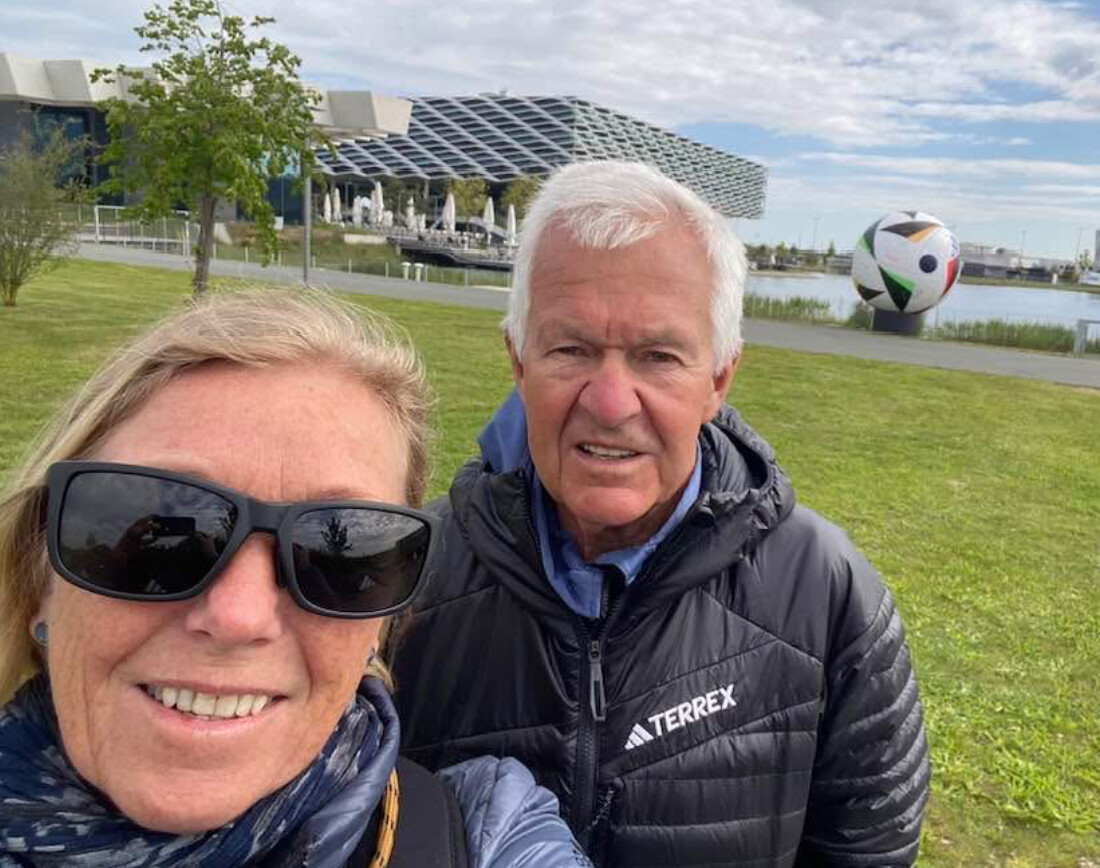
As she entered Central Park, fatigue set in, but she powered through, breaking the tape in 2 hours, 32 minutes, and 30 seconds—a world record at the time. When race director Fred Lebow greeted her at the finish line, she collapsed into his arms, exhausted and overwhelmed.
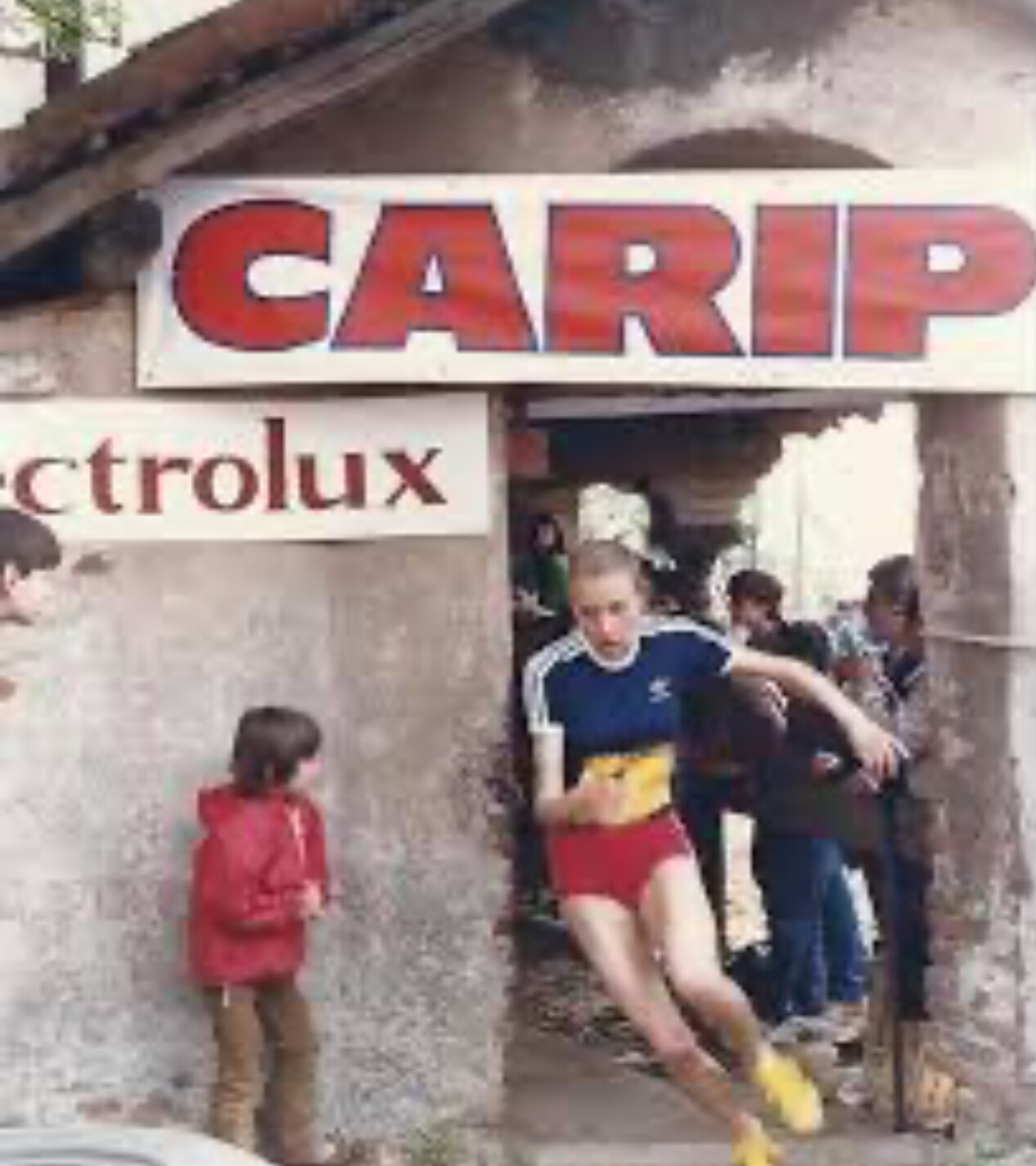
“I’ll never do another one of these,” she famously said. That promise, of course, didn’t last.
A Legacy of Dominance
That win in 1978 was just the beginning. Waitz would return to New York eight more times, winning a record nine titles between 1978 and 1988. She became the face of women’s marathoning, inspiring countless runners and proving that women not only belonged in the sport but could dominate it.
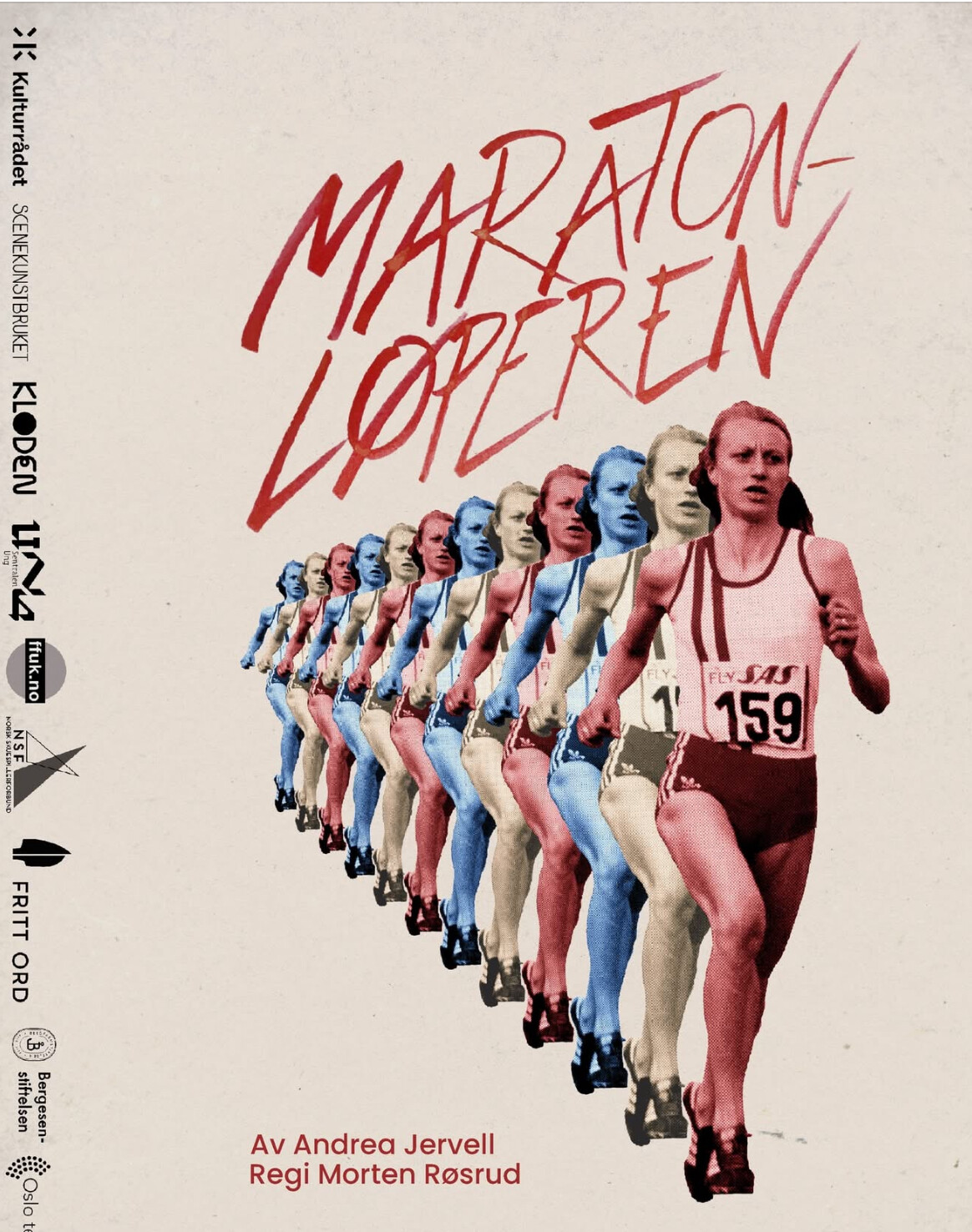
Her influence stretched beyond New York. In 1983, she won the first-ever Women’s World Championship Marathon, and a year later, she took silver in the first Women’s Olympic Marathon at the 1984 Los Angeles Games, finishing behind Joan Benoit Samuelson.
More Than a Champion
While her records and wins made her a legend, Waitz’s true impact came from the doors she opened for female distance runners. Before her era, women’s marathoning was an afterthought. The Boston Marathon had only officially allowed women to compete in 1972, and many still believed that running long distances was dangerous for women. Waitz shattered those myths.
She continued to race into her 40s and later devoted much of her time to coaching and philanthropy. In 2005, she was diagnosed with cancer, but she faced it with the same resilience she showed on the race course.
Jack Waitz: Continuing the Legacy
Grete’s husband and coach, Jack Waitz, played an instrumental role in her career, guiding her training and race strategies. Following Grete’s passing in 2011, Jack has remained deeply involved in the running community. He continues to share his expertise, offering training advice and motivational tips to runners of all levels.
Jack’s ongoing commitment ensures that Grete’s legacy endures, inspiring new generations of runners to pursue their passion for the sport.
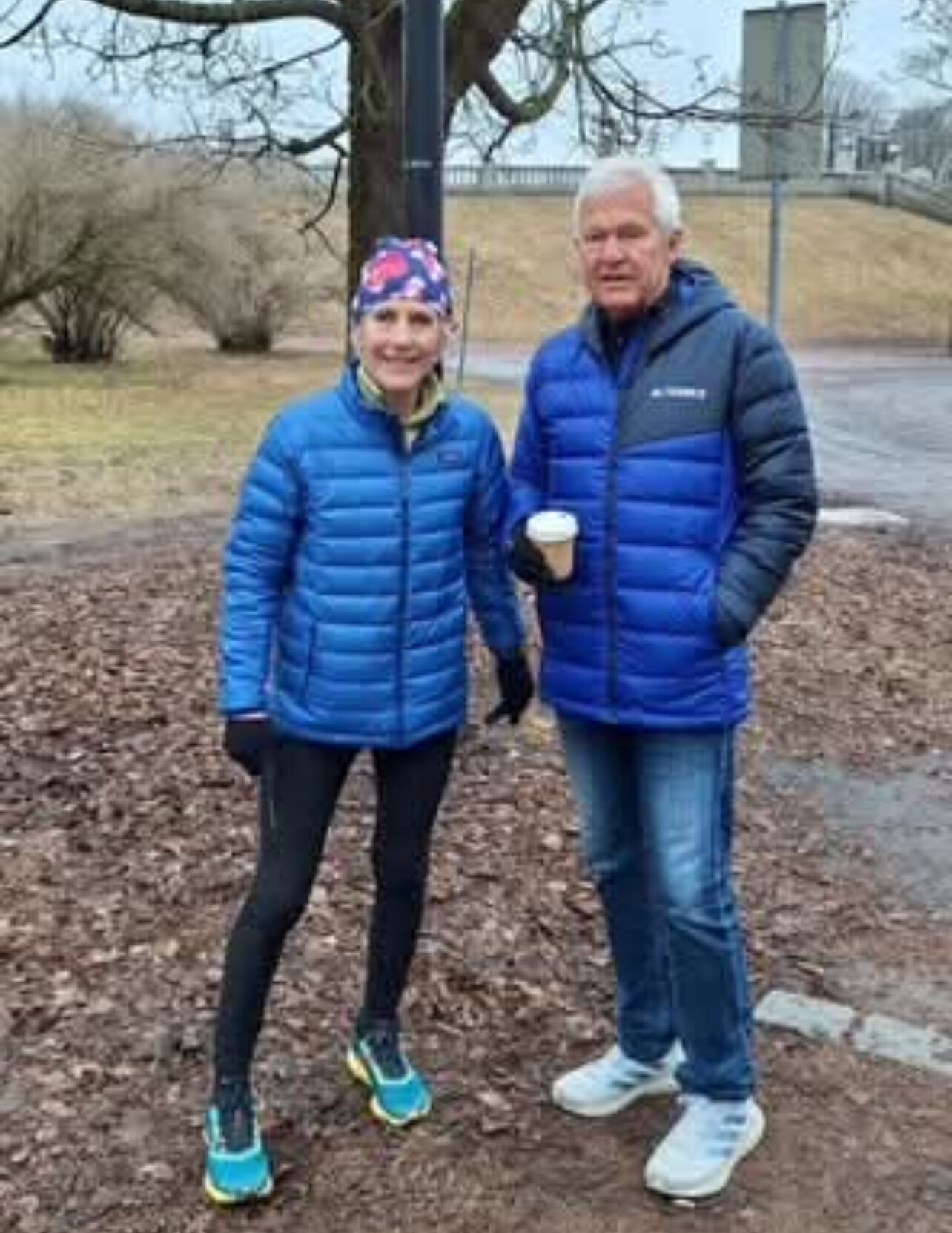
A Lasting Inspiration
Grete Waitz passed away in 2011 at the age of 57, but her influence is still deeply felt. She was not just a marathoner; she was a trailblazer who proved that women could race—and win—on the biggest stages.
Today, the New York City Marathon regularly features over 50,000 runners, nearly half of them women, a testament to how far the sport has come since 1978. The shoes are faster, the crowds are bigger, and the elites now start separately, but the legacy of Grete Waitz remains woven into the fabric of the event she helped define.
Her first marathon may have been accidental, but her impact on the sport was anything but.
by Boris Baron
Login to leave a comment
5 Things Most Marathoners Shouldn’t Worry About
Marathon training can be overwhelming, but some things just aren't worth the stress
With the abundance of marathon training advice available today, figuring out how best to prepare can seem as daunting as the race itself. There are training plans for every ability level, books dedicated exclusively to the subject of marathon nutrition, and accessories for problems you probably didn’t know existed. For someone with limited time to dedicate to the inherently absurd pursuit of racing 26.2 miles, the question may arise: How much of this stuff do I really need to worry about?

Of course, the answer depends on your goals. Anyone looking to qualify for the Olympic Trials will be fine-tuning their training down to the last detail. But for the average marathon runners, it’s easy to miss the forest for the trees.
To help cut through some of the clutter and distill those aspects of marathon training that matter most, we consulted Mario Fraioli, a former collegiate All-American and head coach of the digital coaching service Ekiden. (He also writes a weekly newsletter called the Morning Shakeout.) Fraioli has coached several elite-level athletes, but we picked his brain about what the rest us should be most focused on.
There’s No Magic Marathon Diet
One reason long runs are indispensable to marathon training is that they give you a chance to practice taking in food and drink in a race scenario. When it comes to nutrition-related aspects of marathon prep, figuring out what will work for you in a race is more crucial than worrying about things like “carbo-loading” or trying to find a perfect marathoner’s diet.
Of course, a healthy diet will bolster your chances of racing well, and you’ll need to eat more as you burn more calories, but what constitutes a healthy diet for the average runner doesn’t dramatically differ from a healthy diet in general.
Ingesting gels during the late stages of a race, on other hand, poses a unique challenge that you should prepare for.
“In marathoning, fueling is the X-factor for a lot of people,” Fraioli says, noting that it’s essential to figure out beforehand how your body responds to taking on food after two hours of running. Then there’s the mechanics of it—things like learning to squeeze a plastic cup so you can drink its contents midstride without sending most of it straight up your nose.
“Drinking on the run is something a lot of people, even top pros, struggle with, because they don’t practice it,” Fraioli says.
You Don’t Have to Hit the Track
For most advanced marathon runners, training includes a combination of long runs at or near race pace, as well as short, fast interval workouts. If you can’t fit both into your schedule, it’s best to prioritize the former.
In recent years, fitness media has heralded the benefits of high-intensity interval training, or HIIT, often with the purpose of explaining how the short, fast repetitions can also benefit those preparing for long races. There’s no question that HIIT is a great way to build fitness quickly, but this shouldn’t obscure the fact that, ultimately, long runs are the closest simulation of what you’ll face in a marathon.
The bottom line is that while you can still achieve a very good result in the marathon without incorporating short intervals into your training, missing your long runs will lead to race-day disaster. (Case in point: 60-year-old 2:45 marathoner David Walters hardly runs any short stuff anymore, but, well, he’s still pretty good.)
“Even for most competitive marathoners who are not elite, they are running somewhere between two hours and 30 minutes and three hours and 30 minutes. That’s a lot of time on your feet,” Fraioli says. “Just from that standpoint, the long run carries a greater importance—so you’re comfortable being out on your feet and running that long.”
Focus on Your Own Training Plan, Not the Pros’
Fraioli has recently noticed a lot of very good amateurs trying to emulate the workouts of world-class runners. This is not a wise approach.
“Some runners look at all these wild workouts—40K at 95 percent marathon pace—and they’ll think, ‘Well, if this is what the top people in the world are doing, I’m going to tailor that to my own training,’” he says. “They don’t always realize that for these athletes, it’s their full-time job, and they’ve built up being able to handle that level of stress over the course of many years.”
Instead of trying to figure out what Galen Rupp is doing, the most valuable training log you can consult is your own. Fraioli has documented his training since his high school running days and says it’s like a personal reference text that provides healthy perspective on his entire running career. Such journals are a both great way to see how far you’ve come and an essential resource when it comes to planning your next training cycle.
Save the Racing Flats for When You Qualify for Boston
Yes, we’ve published articles about the benefit of racing in flats, and there have certainly been exciting innovations on this front, but for the majority of marathoners, the procurement of lightweight racing shoes is literally one of the last things they should be concerned about.
“I think racing flats falls into that last 5 percent,” says Fraioli. “Most people should look to optimize the other 95 percent of training elements first.”
If you’re new to marathoning, it’s advisable to complete a few races in the same running shoe you’re used for training, rather than opting for a lightweight model right off the bat. (For advice on picking the perfect shoe, look here.) Down the line, racing flats can increase running efficiency and help shave a few seconds off your finishing time, but they also offer less in the way of cushioning and support. Think of them as a reward to give yourself after your first breakthrough marathon performance.
Your Training Plan Is a Guide, Not an Instruction Manual
There’s no question that training for a marathon requires discipline, but discipline shouldn’t be confused with dogmatic adherence to a prescribed training plan. When putting together a workout schedule for a future race, it’s impossible to know how you’re going to feel on a particular day, eight weeks into your training. Furthermore, you probably can’t anticipate external factors that can cut into your time, whether that’s a workplace fiasco or sudden snowstorm.
Like elsewhere in life, flexibility is key. Once you accept the fact that you may be able to run only four days in a given week, you can focus on making sure to include those workouts that are most important—for example, the weekly long run mentioned above.
“I think there are too many people trying to cram 100 miles into what for them should be a 50-mile week, rather than thinking about what they should be prioritizing,” says Fraioli.
“You don’t want to chase [mileage] numbers for numbers’ sake. You want to prioritize the training elements that will yield the biggest returns for you, based on how much time you have available.”
Login to leave a comment
Despite Mud, Joshua Cheptegei Continues Prep For Valencia Marathon Debut
Joshua Cheptegei is running 140 to 160 kilometers a week in preparation for his marathon debut in Valencia on December 3, through relentless mud in Uganda.
At his training camp in Kapchorwa, Uganda, about 33 kilometers west of the Kenya border, Joshua Cheptegei is running 140 to 160 kilometers a week in preparation for his marathon debut in Valencia on December 3. A disciplined athlete with a usually sunny demeanor, the 27 year-old Ugandan is facing a challenge beyond tired legs, fatigue, and sore muscles: relentless mud.
"Normally we are used to go to the forest for these runs," Cheptegei told reporters on a conference call today which was delayed by a power outage. Speaking on a shaky phone line he continued: "We cannot do that because it's getting muddy, not better. It's still horrible, it's still chilly. But, we've done most of the work. It should be OK."
Cheptegei, who won the World Athletics 10,000m title in both 2022 and 2023 and is the world record holder for the distance (26:11.00), can expect dry and sunny conditions for the Maratón Valencia Trinidad Alfonso two weeks from Sunday. He chose to debut there because of both his relationship with the city, where he set two world records, and because of the favorable date. Consulting with his coach Addy Ruiter and his management team at Global Sports Communications, Valencia made the most sense, he said, because it allowed him adequate recovery time both after the 2023 track season and before his 2024 track preparations begin. He also just feels good running there.
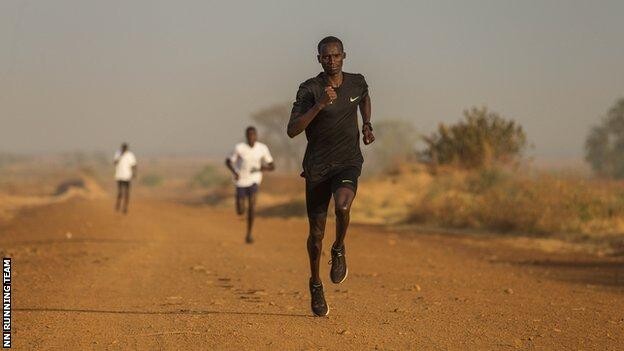
"Valencia is the 'City of Running,'" Cheptegei said, repeating the tagline used by the marathon's organizers. "When I thought of the marathon I spoke to my team... and you know what? It had to be Valencia because of the history of running there." He continued: "When I went to Valencia in 2019 when I set the world record on the roads (for 10-K), and in 2020 during COVID I set the world record on the track. For me, that brings up the excitement and expectations. It can give you a good motivation, at least."
When asked about his goals for his first marathon, Cheptegei said he was trying to keep it simple. It's a new event for him and he's got a lot to learn.
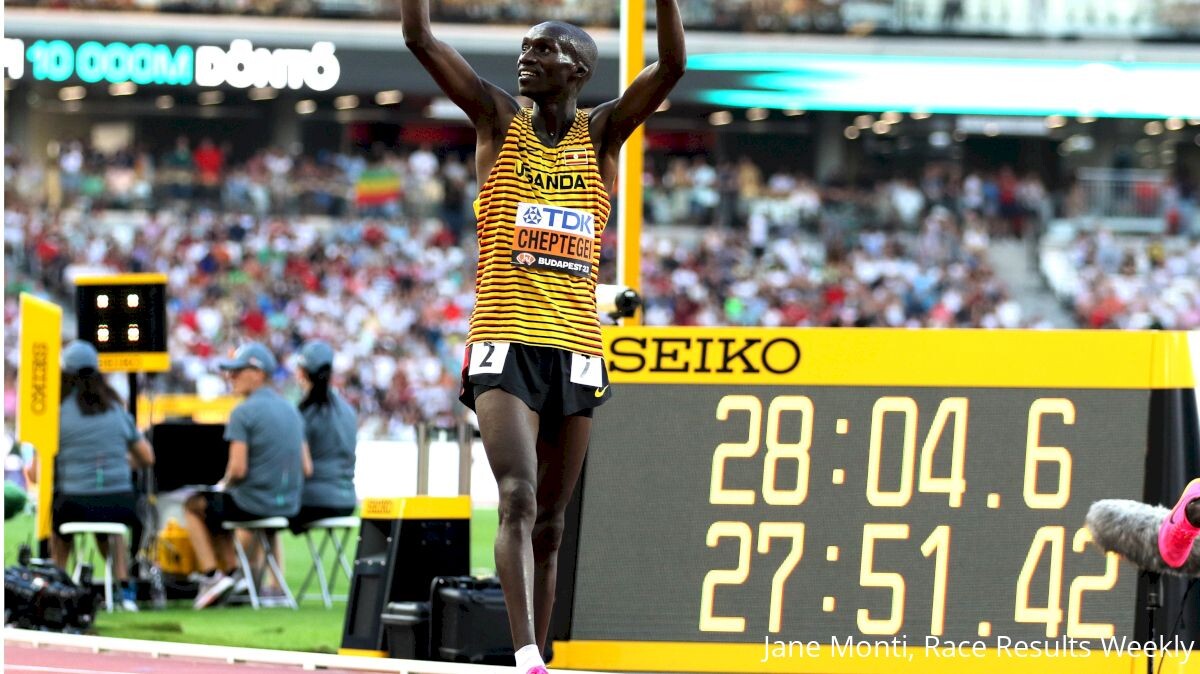
"I'm not actually looking to run fast the first time," he said. He added: "For me, I want to learn. The best for me is to see myself being on the podium, whether I run 2:03 or 2:04. I don't know what will take me to the podium. For me what is important is to enjoy the race and see what happens after 35 kilometers."
Cheptegei gets at least some of his training advice from two Olympic Marathon champions, Kenya's Eliud Kipchoge and Uganda's Stephen Kiprotich. He said these men were two of his "pillars" in athletics. He was only 15 years-old when Kiprotich was the upset gold medalist at the 2012 Olympic Marathon in London. Cheptegei, who was on summer holidays from school, remembers watching the race on television.
"I remember so much," he said. "I was actually in high school." He continued: "It affected me positively. One day I want to become world champion and be a national hero like him."
Kiprotich advised Cheptegei to remain on the track and not jump to the marathon too soon, he said. The marathon in December would give Cheptegei a new and exciting goal in the near term, and help prepare him for the Paris 2024 Olympics where he hopes to upgrade his 10,000m silver medal from Tokyo to gold. He might also try to defend his 5000m title, but he has not decided yet whether he should double.
"Stephen told me to stay longer on the track, focus on the marathon, then come back to the track again," Cheptegei said. "Stephen has been one of the guiding pillars. He gave me the green light."
In addition to logging long days on his feet, Cheptegei is trying to master some of the marathon's technical challenges. For instance, he is learning as much as he can about hydration, a critical factor in marathon success. His previous training didn't involve so many long runs, something he considered "tiresome" in the past but which is now "part of life."
"First and foremost, because of the marathon what I really lack is especially (knowledge) about hydration," he said. "You really need to learn how to hydrate."
He is also being careful about his choice of shoes. He plans to use one of Nike's Vaporfly models, a shoe he is comfortable with, instead of the more radical Alphafly series.
"For me about the shoe, normally I like to run in a shoe I'm comfortable with," he explained. "For me, I'm still looking to run in the Vaporflys. He continued: "I'm more familiar with the Vaporflys. I still need more time to learn the Alphaflys."
Cheptegei confirmed that he is committed to the track for 2024 and the Paris Olympics are his highest priority. As excited as he is about his marathon debut, he seemed equally excited to return to the track.
"It's a new adventure that I'm really looking forward to," he said of the marathon. He continued: "I still want to go back in Paris and win the 10,000m."
by David Monti
Login to leave a comment
VALENCIA TRINIDAD ALFONSO
The Trinidad Alfonso EDP Valencia Marathon is held annually in the historic city of Valencia which, with its entirely flat circuit and perfect November temperature, averaging between 12-17 degrees, represents the ideal setting for hosting such a long-distance sporting challenge. This, coupled with the most incomparable of settings, makes the Valencia Marathon, Valencia, one of the most important events in...
more...Training Advice from the Greatest Women Masters Marathoners Alive
While Jeannie Rice and Jenny Hitchings are busy setting masters world records, their differences in training are even more instructive than their similarities
The spring marathon season has come and gone, and it didn’t disappoint, producing sensational races and world headlines. This was particularly true in Boston and London. However, you might have heard little or nothing about two of the best marathon performances in those events.
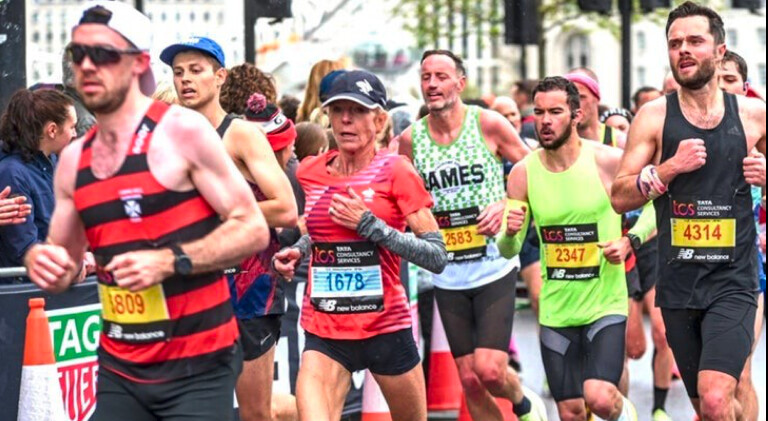
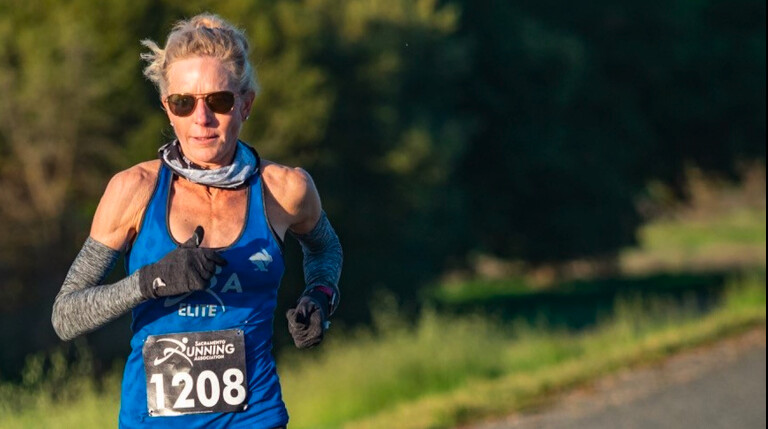
The big media coverage went to seemingly-unbeatable Eliud Kipchoge, who finished sixth at Boston, where Evans Chebet gained his third straight World Marathon Major victory in 12 months. At the London Marathon, Kelvin Kiptum ran 59:45 for the second half, en route to a course record 2:01:27, and Sifan Hassan demonstrated that she can win in the marathon as she has at multiple shorter distances.
But 75-year-old Jeannie Rice and 59-year-old Jenny Hitchings outran them all, on an Age-Gender performance basis, both setting new world records for their age groups. Rice’s 3:33:15 in Boston won’t count, since the Boston course is considered ineligible due to its significant downhill slope and point to point layout, which allows for a tailwind boost. Still, she beat the fastest 75-79 age-group male runner by more than 20 minutes, which has likely never happened before in a global marathon. And five weeks before Boston, at age 74, she ran 3:31:22 in the Tokyo Marathon.
A week after Boston, Hitchings ran 2:45:27 in London—a marathon world record for women in the 55-59 age division. Remarkably, she’s at the high end of that age range, as she’ll turn 60 in early July. Not only that, but it was her personal best marathon in 40 years of running.
Rice was born in South Korea and immigrated to the U.S. in her mid-30s. A retired real estate agent, she now divides her time between south Florida and Cleveland. Hitchings is a longtime resident of Sacramento, California, where she works as a middle-school cross-country coach and a private running coach.
Rice and Hitchings live on opposite coasts, but they have much in common. They’ve both been running for decades, both are extremely consistent in their training, and both log multiple 20-milers in their marathon buildups. Surprisingly, neither makes a particular effort to include hill training, a staple among other top marathon runners. Both are small and lean. Rice stands 5-foot-2 and weighs 96 pounds; Hitchings is 5-foot-4 and 100 pounds.
But Rice and Hitchings also present some stark contrasts. These differences carry an important message: There are many paths to marathon success, and the best senior runners understand this. Through their experience and wisdom, they’ve learned to focus on the positives and jettison the junk.
Here’s a look at some of the major contrasts between master marathon greats Jeannie Rice and Jenny Hitchings.
Both Rice and Hitchings had previously won age-group titles at Boston. Rice chose to return there in April for emotional reasons, as Boston marked her 40th anniversary of marathon running and her 130th marathon. Hitchings selected London for technical reasons. In 2021, she ran 2:45:32 at Boston. It would have been a record except for the point-to-point course prohibition. So this spring she opted for London’s record-eligible course.
Rice: “Boston has always been a special marathon for me,” said Rice. “My preparation wasn’t the best, as I ran the Tokyo Marathon in early March, and then did some traveling. But I wanted to have my Boston celebration, and I had quite a few running friends there with me.”
Hitchings: “London was on my marathon ‘bucket list’ anyway, and it gave me a great opportunity to set an age-group world record,” said Hitchings. “Since my 2:45 at Boston didn’t count, I figured I should take a crack at London while I was still in the age group.” [She will turn 60 in early July.]
Rice has always been self-coached. Hitchings, a running coach herself, has had a longterm coach-athlete relationship with Chicago-based Jenny Spangler. Spangler won the U.S. Olympic Trials Marathon in 1996 and ran a 2:32:39 marathon in 2003, after turning 40.
Rice: “I’ve been approached by people who wanted to coach me, but they seemed expensive and had other demands I didn’t like. I listen to what my friends do and what others are doing in training. I try to run 50 miles most weeks, and a bit more before my marathons. But I don’t actually follow a schedule. Mostly I just train the way I feel. I’m still running strong and beating records, so I must be doing something right.
“I know it’s possible that a coach could help me the way Gene Dykes’s coach helped him, but it’s also possible that things could go wrong. I like to decide my training according to how I feel each day.”
Hitchings: “I coach other runners, and I could certainly coach myself, but you know what they say about doctors who treat themselves: They have a fool for a patient. I think that can also apply to athletes who coach themselves. It’s just smarter to have someone looking over your shoulder, and adding some perspective.
“I’m one of those who’s often guilty of running too fast on my easy days, or getting excited and going too hard when I’m training with friends. Jenny [her coach] holds me accountable for those kinds of things. She has a great personal performance record that I respect a lot, and has been coaching for many years.
“It’s also important to me that she’s a female coach of my own age. She understands what I’m going through and dealing with in terms of female physiology.”
Both runners say they enjoy a relaxed morning cup of coffee before launching into their days. But Rice is up earlier, and often out the door quicker. Hitchings needs more time to be ready for a solid run.
Rice: “I like to get my run done early, so I have the whole day in front of me when I get back home at 7:30 A.M. or so. I’m usually running by 6 A.M. In Florida, where I spend my winters, that can be important for the cooler weather.
“But on days when I’m going 20 to 23 miles, I’ll get up at 3:30 A.M. and begin running at 4:30 A.M. I’ll go two hours on my own, and then join a local training group for their morning loop, which gives me another hour or so.”
Hitchings: “I coach a number of people who can roll right out of bed and start running. I’m not one of those. My favorite time to run is about 8 A.M. or 8:30 A.M. in the morning. I like my coffee first, and the morning newspaper, and I always make sure to get a light breakfast in my stomach. Since my favorite place to run is the American River Parkway, that gives me another 15 minutes of drive time before I get going.
“There have been times when I had to be a noontime runner, and that was OK, too. But 4 P.M. or 5 P.M.? That’s not going to happen. By that time of day, I’m too tired or depleted.”
This one is easy for Rice, who has never been injured except for a fall (and banged-up knee) in 2021 that cost her several weeks of running. Hitchings also considers herself relatively injury-free, but she has encountered an assortment of typical runner injuries through the years: Achilles tendinitis, piriformis pain, and surgery for Haglund’s deformity (a bony growth at the back of the heel resulting from mostly genetic causes).
Rice: “I go to the gym three times a week for a light strength workout, some pushups, and some stretching. But it’s not a serious session at all. I also golf for fun; I really enjoy golfing.”
Hitchings: “I try to do light weight work as much as I can, and I ride my bike 20-30 miles a week outdoors, and do Peloton indoors. Recently, I added Pilates once a week to improve my strength and mobility.
“Also, Jenny and I have agreed to take one hard running day out of my weekly schedule. I used to do speed work of some kind on Tuesday and Thursday, and a long weekend run. Now I’m down to speed on Wednesday, and a weekend long run that often has some tempo-pace segments.”
While both are clearly fit, Rice and Hitchings say they enjoy a wide variety of foods, and have no particular restrictions in their diets. Both enjoy wine drinking. Hitchings admits to a sweet tooth, too, but desserts are not a problem for Rice.
Rice: “Breakfast is usually oatmeal with fruit and nuts. At lunch and dinner, I enjoy a green salad with some sort of seafood or fish on top. I’ve never liked sweets and don’t crave them, but I love cheese and nuts. That’s my big downfall—cheese and nuts. The only supplements I take are calcium with vitamin D, B-12, and magnesium.”
Hitchings: “I eat ‘clean,’ a well-balanced diet with an emphasis on carbs. I simply don’t feel good if I eat heavy, creamy, or fried foods. I get most of my vitamins and minerals from real foods, though recently I’ve added Athletic Greens to my routine.
“When I’m in heavy marathon training, I find it hard to maintain my weight, so I’ll have some protein shakes and maybe one chocolate bar, muffin, or pastry per day. I’ve got a drawer full of vitamins, calcium, collagen, and iron supplements, but I never seem to stick with any for long. It’s just too much.”
While realistic about their futures, neither Rice nor Hitchings sound the least bit intimidated by the unwritten future. Despite aging, both are driven to perform. They hope to keep running hard and fast, and chasing age-group records. Both plan to run the Chicago Marathon on October 8, as it will be the site of this year’s Abbott World Marathon Majors Wanda Age Group Championships.
Rice: “Getting faster at 75 is almost impossible, but this year I’m going to run a few road miles to work on my speed. I’ve won my age group in every World Marathon Major but London, so I want to get back to London in the next several years. I want to run the Sydney Marathon, the Ho Chi Minh City Marathon, and, of course, I must run the Seoul Marathon in the country where I was born.”
Hitchings: “I’m running faster at 60 than I’ve ever run in my life. My time in London was literally my lifetime best, and I’ve been running a long time. Sometimes I get asked, ‘When are you going to stop running?’ My answer is always: ‘Why would I stop?’ I’m still getting faster, and I’m still enjoying it.”
Rice, though 15 years older, feels the same. It’s fun winning major marathons, of course, especially when she beats most men her age. In local and regional races, she challenges herself to finish as high as possible in the masters division against females three decades younger (and sometimes wins outright).
“I love competition,” she says. “I’m motivated to train hard, and I’m excited about setting more records as long as I can. Maybe into my 80s.”
Running is about finish times, sure, but it’s even more about attitude. Find the goal that’s right for you, and go after it. This is the approach both Rice and Hitchings have followed successfully, and neither plans to change course now, no matter how many candles adorn their next birthday cake.
Both are on a shared mission, and they’d like others to join them. As Hitchings says: “I think if we keep a positive attitude and motivation, we can go out there and do much more than people think. It’s important to show others that we can defy the way aging has been defined for us for so long.”
by Outside Online
Login to leave a comment
Elite Runners and Coaches Bust Six Major Training Myths
Let's be honest. There's a ton of bad training advice out there. Heck, there's just unchecked advice flung here and there and everywhere these days, on all topics of living and being.
So how do you best navigate these thickets of often dubious recommendations? How do you validate what's solid, and what's not? At Trail Runner, we turn to the experts. We turn to well-respected coaches and the most consistent and high-performing elites in the business. We turn to science.
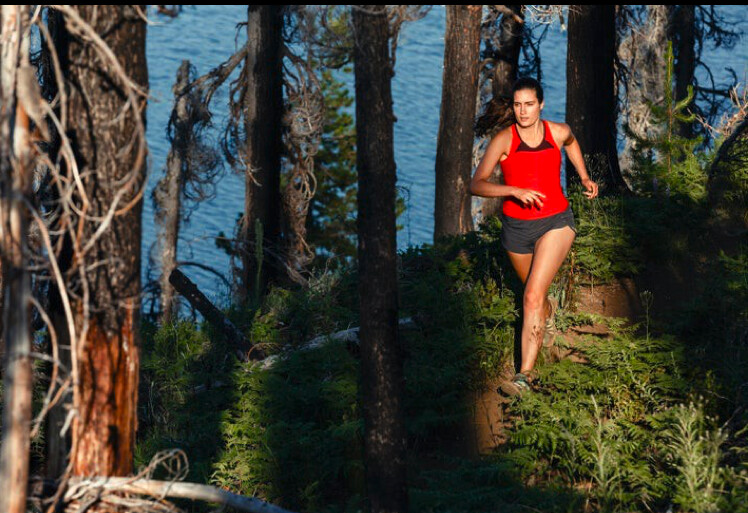
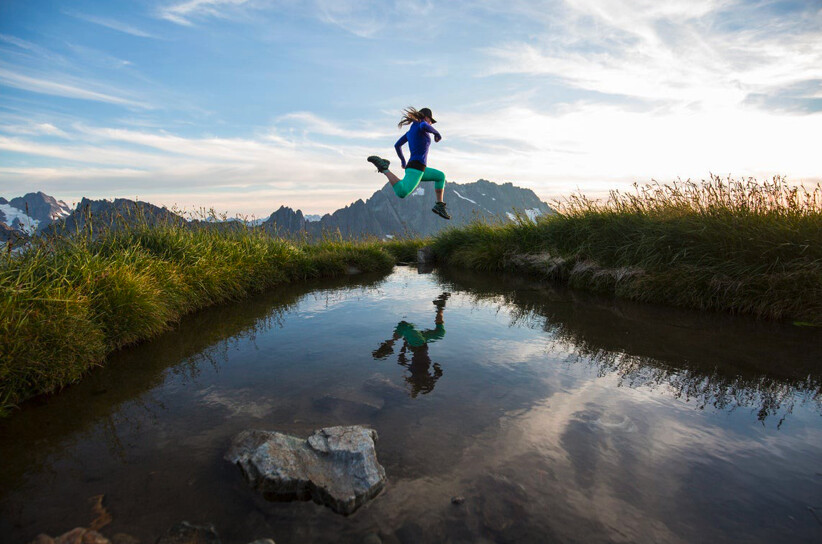
From bro science to outdated training methods, here are eight stubborn training myths that just won't go away, and some proactive solutions to keep you tacking in the right direction.
Myth #1: Always Run High Mileage
It's tempting to think the only way to improve is to run more and more and to keep piling on the miles. But, high-volume training can have diminishing returns for many athletes.
"Running more miles isn't always the answer and comes with a laundry list of disclaimers: injury, sickness, burnout. Instead of adding more miles, fold in a form of cross-training. This helps keep training fresh, the body happy, and it's still stoking that aerobic engine," says coach and elite mountain runner Tabor Hemming.
However, it's also not never the answer. Less isn't always more.
"Adapting over many training cycles usually requires alterations in stress across years, so the best volume an athlete can do is often the least they can do while still adapting consistently, as long the total is within the general range that is needed to spur high-performance in their events for their physiology and load capacity," says coach and Trail Runner columnist David Roche.
"The long-term approach to volume increases leaves room for growth, prevents stagnation, and limits breakdown that can stop an athlete in their tracks long before they figure out where their true ceiling is."
To advance and adapt, you do, in fact, need additional training stress as you progress. Just don't jump into triple-digit miles right off the bat.
Remember that running is different from other sports like cycling because repeated impact leaves athletes more injury-prone. Build up your volume over time, and back off (here's a handy guide) if you're feeling excessively fatigued or if soft tissue injuries occur. Myth #2: Always Give 110%
Elite mountain runner and coach Mason Coppi was hard on himself, always pushing his body to the limit in training and racing.
"No matter what races I won or what times I ran, it was never enough. In my mind, there was always something I could have done differently. I could have always just given a little more effort. Every race and workout I ran I tried to give 110% effort. But here's the thing about 110% effort: it doesn't exist," says Coppi.
Coppi tried to just work harder, to effort more in an attempt to reach his potential. But his performance in races declined steadily as Coppi ignored the signs his body was giving him to loosen up and rest. The more tired he felt, the harder he tried. The harder he tried, the more tired he felt. That feedback loop led to burnout, and Coppi is now taking a temporary step back from running. "You can only give what you have on that day, nothing more," says Coppi. Now, he's working to destigmatize the concept of taking easy days really easy. He works with other runners to help them understand that mental toughness is learning to listen to your body, to assess what your mental and physical needs are on a particular day and respond accordingly.
"Once I realized my best on a given day was my best, a weight was lifted off me," says Coppi. "I knew my all-out effort was enough whether I was limited by something physical or mental."
Now, he no longer chases PRs and fast times on every run and instead works on flexing his adaptability muscle in training. To quote Coach Ted Lasso, "I want 60% effort, 1000% of the time."
Consistency beats intensity when it comes to reaching your athletic potential, and enjoying the process.
Myth #3: Don't Worry About Speedwork
Speedwork is a trail runner's best friend.
"It's a myth that you have to train for ultras very slow, via many, many miles. High-intensity work is an ultrarunner's friend and diminishes the need to run 100+ mile weeks," says Jessica Riojas Schnier of Smiles and Miles Coaching. Use high and moderate-intensity workouts to train smarter and more efficiently. You'll reduce your risk of injury and burnout if you are more efficient with your training, which then makes us happier runners, for longer!"
Start by integrating 15-30 second strides at the fastest pace you can go without straining with one to two minutes of easy, recovery-effort running in between. Do four to eight sets, two to three times a week throughout your runs.
Then, you can start integrating more structured workouts into your training. We recommend beginners start with these looser, more relaxed trail workouts. More advanced runners can skip right to these race-oriented workouts, or even get into some fun, combo workouts.
Don't be afraid of a little speedwork. It'll help you train smarter, faster - and maybe you'll even have more fun. Myth #4: You Must Move to Boulder
While many top trail runners live in mountain Meccas like Boulder or Flagstaff, there are plenty of folks who live and train far from the Rocky Mountains and still compete at a high level. Take Ohio-native Arlen Glick, for example, who finished third at this year's Western States Endurance Run.
"There is still a myth that if you do not live near mountains, you can't do well or complete mountainous races. I have seen numerous athletes repeatedly train in the prairies (flat flat flat lands) of Canada and crush some of the most technical trails and races with incredible vertical gain and loss," says coach Jenny Quilty.
There's plenty you can do to prepare for steep races, even if you don't live in Chamonix. Functional leg strength, like Mountain Legs, can help build strength and resilience through specific movement patterns. Improving your running economy through speedwork and hill strides is also key for mountain adventures and competition.
Also, don't fear the dread-mill. Treadmills can help you practice power hiking, and just a few concentrated sessions are enough for some mega-mountain adaptations. Uphill treadhill doubles are also a great way of getting some vert in, all while reducing impact. Don't overlook the eccentric strength required to rock downhills, though, as many runners' legs are more affected by descents than the climbing.
Myth #5: Run a Metric-Ton of Vert
While you'll want to do some vert-specific work to get better at climbing, overdoing it can lead to slow-downs and stagnation.
"You don't have to run a ton of vert to get better at climbing," says Nike pro athlete Matt Daniels. "I have seen with many athletes that the ones who have developed more speed and better running economy without hundreds of miles in the mountains are the ones who end up handling the vert better on race day. There has to be a fine balance between vert-heavy runs and economy build-in training to be a good climber on race day."
Work on improving overall fitness without overemphasizing vert. According to coach and columnist David Roche, "The best climber is usually the best runner with just enough specific training on climbs." Focus on improving your running in training, while mixing in strength work (like mountain legs) and incorporating more vert as you get closer to your goal event.
Try to get out on trails with race-similar terrain on the weekends leading up to your event, and mix in some mid-week vert during workouts and easy runs, too. Try to run the downhills with intention to get your legs ready for the muscle breakdown they'll incur on race day.
Myth #6: Don't Race Until Perfectly Trained
Curious about diving into your first trail race? Don't wait!
"It's a myth that you have to already be an accomplished trail runner to register for a trail race. Most trail races are not that much different than road races (except if you're racing in the mountains, of course) in terms of their footing," says Denver-based Strength Running Coach Jason Fitzgerald. "Get a good pair of trail running shoes, get comfortable on all kinds of surfaces, and you'll have a blast at your first trail race!"
If you're curious about jumping into a trail race, reaching out to the race director can help determine if you're ready for and interested in a particular event. Researching past participants' race reports can help, too. (Remember to always take race reports with a grain of salt, since it's just one person's experience and perspective.) It doesn't hurt to have a friend sign up for the event with you for moral support and training accountability.
Our advice? Start small. Find an event that's short enough that it sounds fun, rather than a huge stretch for your first race.
Also, make sure you have a solid, consistent base of miles and you're not jumping into something that's hugely above your pay grade. We recommend at least six hours a week of training before jumping into a 50K, and closer to nine hours a week when you're looking at the 50-mile distances and up. If you're not sure where to start, check out our full catalog of training plans here.
by Trail Runner Magazine
Login to leave a comment
Runners win places in Paris 2024 mass-participation marathon after racing Kipchoge
More than 1,000 runners secured their placed in Paris 2024’s mass-participation marathon after holding off Olympic champion Eliud Kipchoge in a special event arranged to mark the 1,000 days countdown to the Opening Ceremony.
The event at the Champs-Elysée in Paris saw a pursuit-style race held over five kilometres.
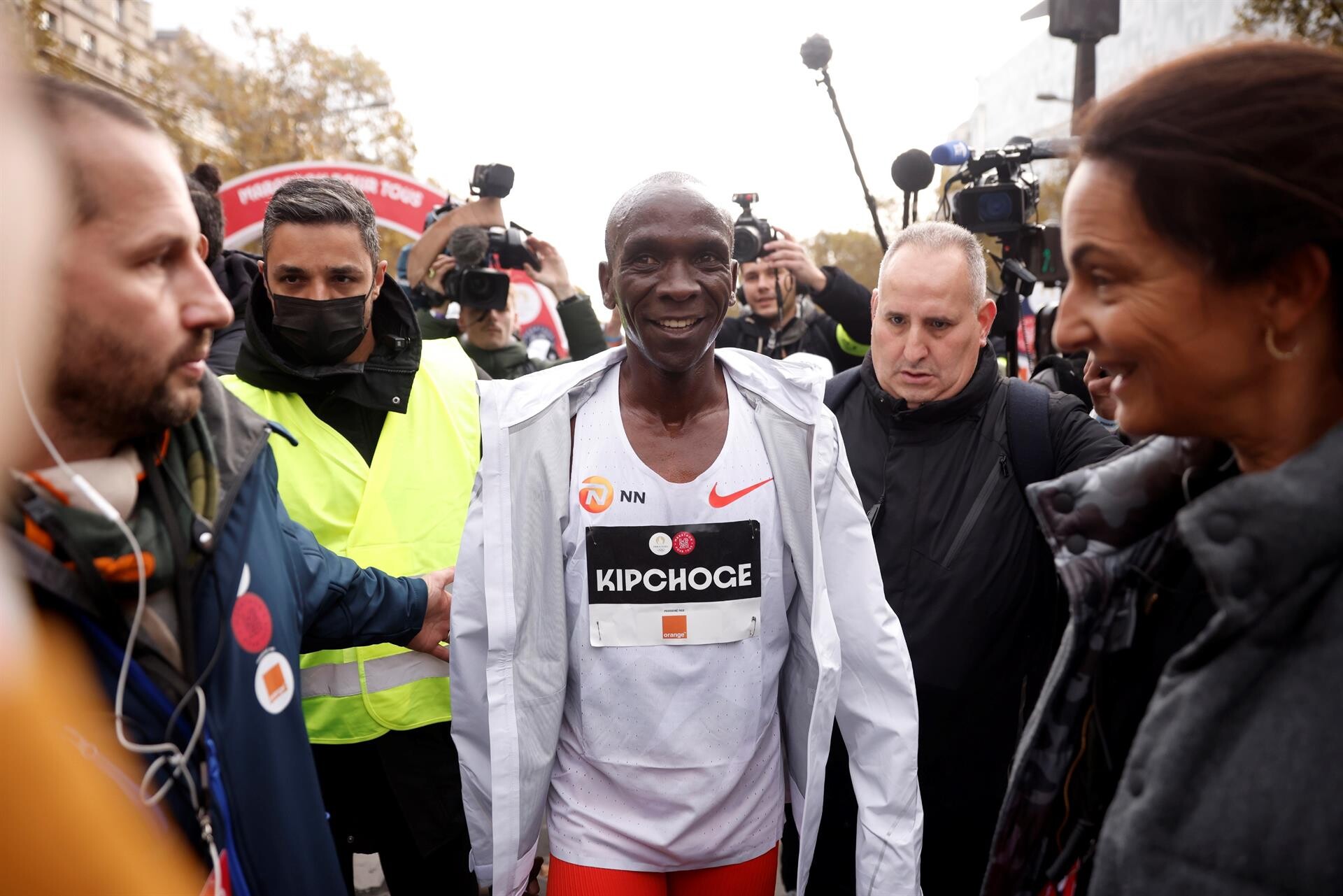
Paris 2024 says more than 3,600 members of Club Paris 2024 and the Orange Running Team participated in the event.
Club Paris 2024 was launched last year by the Organising Committee, offering the public the chance to secure privileges in the build-up to the Olympic and Paralympic Games, including the potential to carry the Flame.
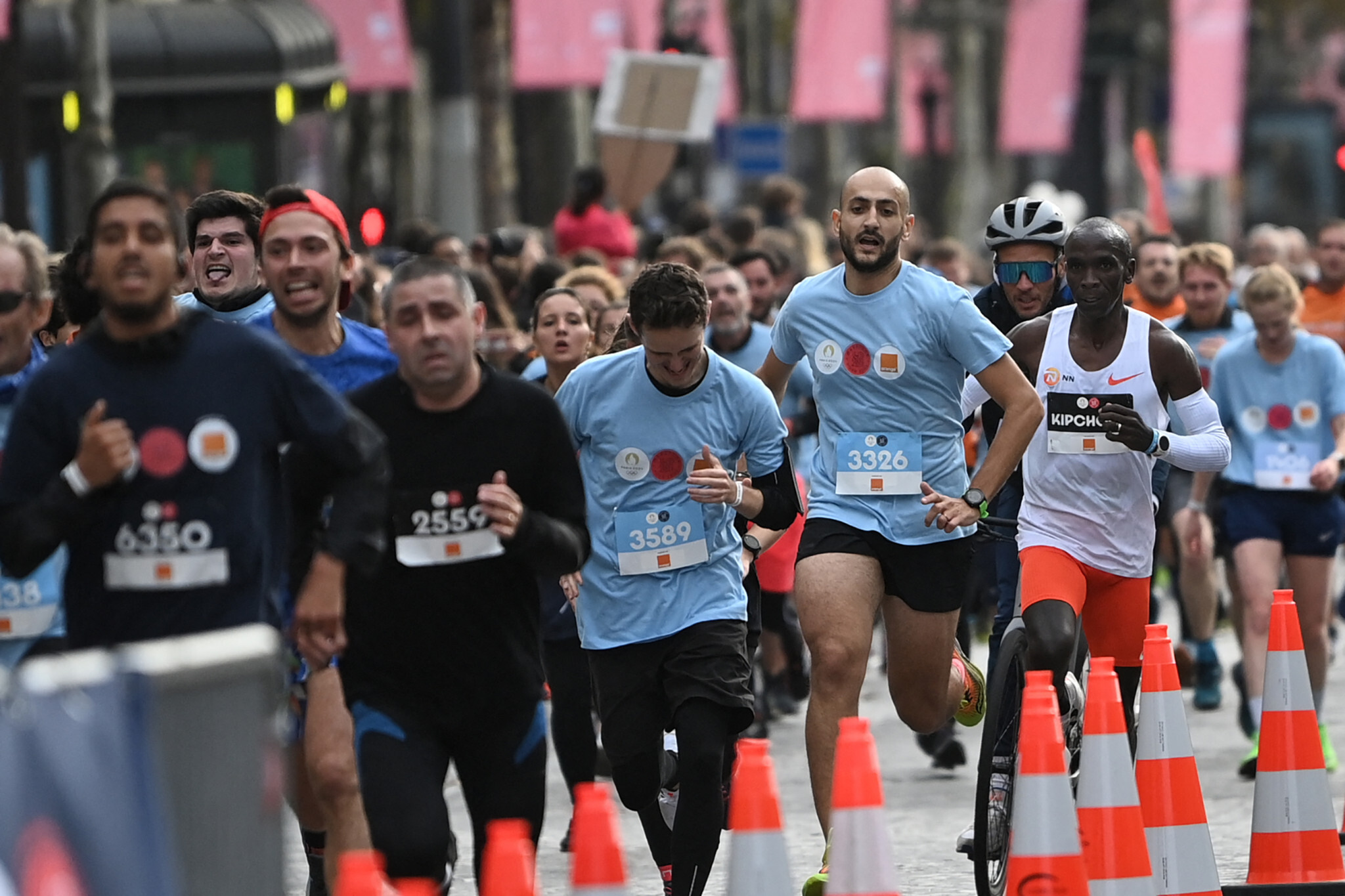
Orange was last month named the main sponsor of the mass-participation marathon.
Participants set off before Kipchoge in different groups depending on ability today, racing on a course across the Place de la Concorde and the Champs Elysées.
In excess of 1,000 runners finished before the marathon world record-holder and double Olympic champion, earning them places in the mass-participation event in three years’ time.
"This is the first time I am happy to have lost," said Kipchoge, whose marathon world record stands at 2 hours 1min 39sec.
"My defeat is a victory for several hundred people to whom I look forward to meeting in 2024 here in Paris."
The mass-participation race at Paris 2024 is scheduled to take place on the same day as the Olympic marathon.
It will be the first time a public marathon will be held alongside the Olympic event.
The races will also be held on the same course.
A separate 10km race will also be staged on the day, with Paris 2024 highlighting their desire to actively involve the public in the Games.
Organisers say there will be several other opportunities for runners to secure bibs of the Marathon Pour Tous - Marathon For All.
A running app has been launched by Club Paris 2024, which organisers say will provide training advice and running inspiration in the build-up to the Games.
The app will reportedly offer personalised training programmes and challenges adapted to all levels and objectives.
Places in the mass-event marathon will also be won on the app.
by Michael Pavitt
Login to leave a comment
Paris 2024 Olympic Games
For this historic event, the City of Light is thinking big! Visitors will be able to watch events at top sporting venues in Paris and the Paris region, as well as at emblematic monuments in the capital visited by several millions of tourists each year. The promise of exceptional moments to experience in an exceptional setting! A great way to...
more...Understanding Marathon Training Basics
For many individuals, the concept of a marathon is the ultimate personal achievement. Completing a marathon is a massive undertaking and provides individuals with the opportunity to test both their mental and physical limits. For those who have never run more than a mile, let alone finished a marathon, this task can seem not only overwhelming but impossible.
As an experienced athlete and distance runner, Jerome Clavel has often been asked the best training practices for amateur runners looking to get into marathon racing. While it may be a long and difficult road, Jerome Clavel stresses that anyone can complete a marathon if they properly prepare and commit to their training regiment. For those looking to complete their first marathon, Jerome Clavel has the following marathon training advice.
How Long Does it Take To Train for A Marathon
The answer to this question greatly depends on the experience level of the athlete. Those who are experienced joggers or who frequently go to the gym will likely need anywhere between 16 to 20 weeks to properly prepare for a marathon. However, individuals who cannot complete a mile without stopping or those who have not gone to the gym in over a year will need a great deal more time to prepare for a marathon as they will need to focus on endurance training and building muscle. Someone who has never jogged before or who cannot complete a mile without stopping will likely need anywhere between 6 months to a year of daily training to successfully complete a marathon.

Be Aware of the Risks
Running 26.2 consecutive miles is no small feat. Those training for a marathon will need to practice running long distances to properly prepare, which will run a greater risk of injury than simple 3 mile jogs through the neighborhood. Oftentimes, amateur runners will take themselves out of the race before it begins by injuring themselves during training. One of the most common ways marathon trainers injure themselves is by increasing their weekly mileage too fast.
One of the best ways to avoid injury is by consulting a physician before starting a training program. Understanding proper training progression of increasing distance by 10% each week, and, if possible, running at least 20-30 miles a week regularly before beginning marathon training.
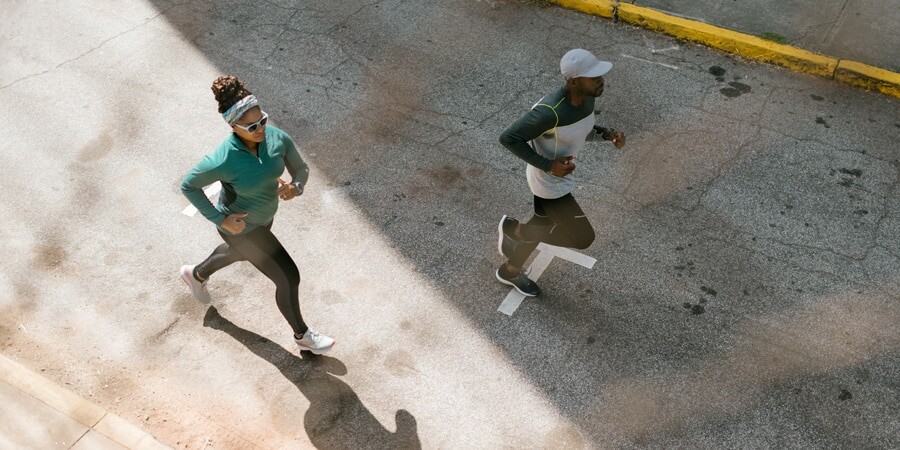
The Four Corners of Marathon Training
There are four basic concepts every racer must know regarding marathon training, long run, speed work, base mileage, and recovery.
Long Run: Long runs help the body adjust to great distances during marathon training.
Speed Work: Help racers improve cardio capacity through tempo runs and interval training.
Base Mileage: Gradually increasing weekly mileage over time through 3-5 running sessions per week.
Recovery: A critical and often overlooked aspect of marathon training. Recovery days help prevent injury and build muscle.
Base Mileage
As stated earlier, when it comes to preventing injury, slowly increasing base mileage is a necessity. Most marathon trainers begin their training at a weekly mileage of 50 miles with three to five runs per week as a starting point. However, those without any prior running experience may need to start at a lower base mileage and work their way up. When creating a training schedule, Jerome Clavel recommends racers make sure their training schedule ends at least 55 miles base mileage per week and that when building to this point, their weekly mileage is never increased by more than 10 percent week to week.
The Long Run
When most people think of training for a marathon, they think that racers should be completing 26-mile runs for weeks before race day. Truthfully, most racers never complete a 26 mile run before race day and only max out their long runs at 20 miles, as it greatly increases the risk of injury. Instead, racers will practice weekly long runs, improving the body’s endurance in a safe and slow method that allows racers to run longer distances gradually.
Most marathon trainers recommend long runs only taking place once every 7 to 10 days and increasing the distance of a long run by a mile or two each week. Additionally, it is also recommended that racers scale back their long-run mileage by a few miles every three weeks to prevent over-exerting the body. For example, if a racer has run 14 miles one weekend and 15 miles the next, they may scale their run back to 12 or 11 miles on the third weekend.
Speed Work
Those who are looking to simply complete a marathon can skip this section; however, for those who are looking to place in their marathon – read on. When properly utilized in a training program, speed work can help improve racers’ overall speed, burst capability, and tempo. Speedwork comprises of two training practices, interval and tempo runs. Intervals consist of a set of short-distance runs at a fast pace, with short recovery jogs in between sets. Typically, intervals are four 1 mile run repeats at a 6-7 min mile pace, with 5 minutes of slow jogging in between sets. Tempo runs are longer than intervals and will generally include 4-10 mile runs at a sustainable pace.
Rest and Recovery
Rest days are perhaps one of the most important aspects of marathon training and should be utilized weekly in marathon training schedules. Rest days are critical as they help muscles to recover and prevent future injuries. Many amateur marathon runners ignore rest days in favor of a long run and may feel as though rest days are counterintuitive for meeting their running goals. However, while rest days mean no running, they do not mean racers cannot walk, hike, swim, or go for a bike ride. The goal is to avoid any high-impact sport to give your body time to rest and your joints to heal.
Roughly three weeks before a race, racers are encouraged to scale back their running and incorporate more rest days into their weekly schedule. This practice is called tapering and helps prevent racer burnout and keeps racers fresh and ready for race day.
Login to leave a comment
Nicky Spinks will lead the way at Trail Skills for Ultrarunners
Scotland-based women’s guided trail running company, Girls on Hills Ltd, have just announced that they will be hosting a ‘Trail Skills for Ultrarunners’ course in Glencoe October 11-13, with the legendary ultrarunner Nicky Spinks the star tutor.
Spinks will be sharing her experiences and coaching women in the essential skills of ultrarunning, including training advice and running with poles. She will be joining an otherwise all-Scottish line-up of other providers, with experts covering areas such as yoga, nutrition, foot-care and self-massage.
For female ultrarunners, there can be no better teacher than Spinks. The inspirational Inov-8 athlete just became the first person to complete double rounds of Britain’s three classic 24-hour mountain running challenges: the Bob Graham Round in England; the Charlie Ramsay Round in Scotland; and now the Paddy Buckley Round in Wales.
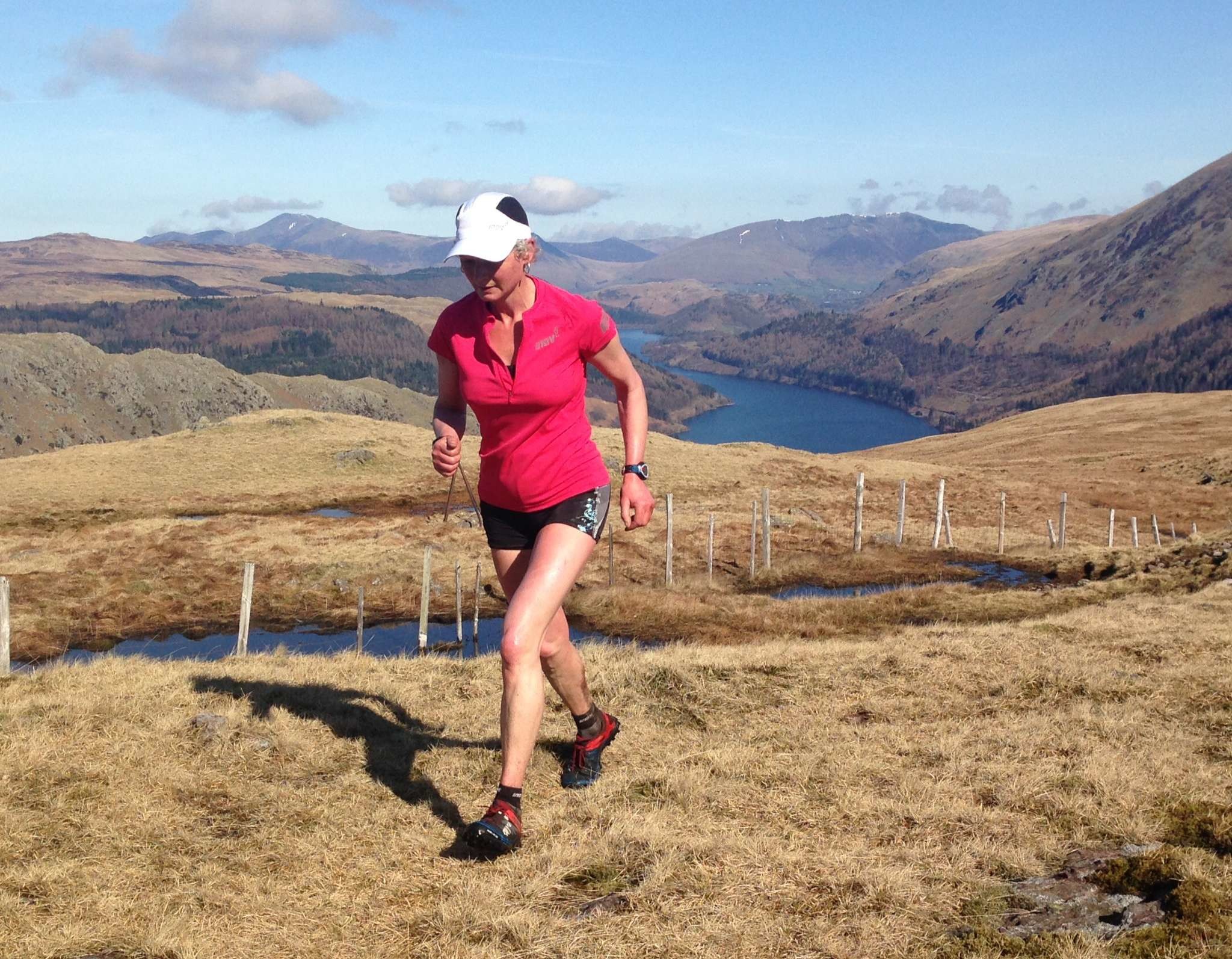
On her two laps of the Paddy Buckley Round circuit last month, Spinks ran 94 peaks and 56,000ft of height gain (almost two times Mount Everest), in 57hrs 27mins to complete the ‘doubles’ and make fell-running history.
Girls on Hills Ddirector Keri Wallace told runABC Scotland online: “Nicky is an incredible woman and an inspiration to so many people, runners and non-runners alike. As a 51-year old, a woman, a farmer and a cancer-survivor, she breaks so many trail-running stereotypes! Who better to join us at Girls on Hills and help coach women in the skills they need to get outside and explore their limits through ultrarunning!”
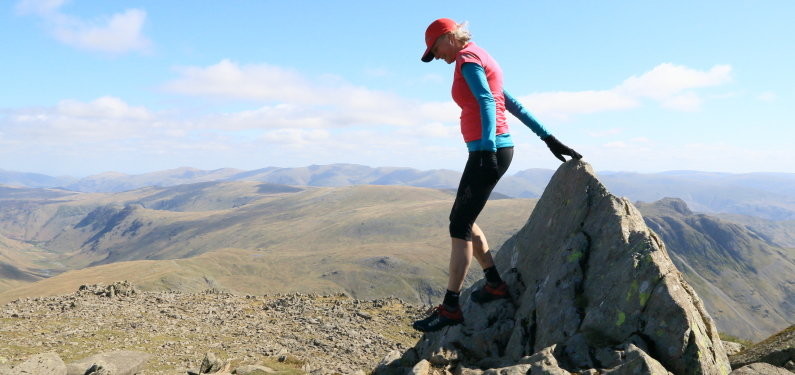
As a company, Girls on Hills Ltd, who are sponsored by Ellis Brigham Mountain Sports and are partnered with Inov-8 clothing, seeks to address the gender gap in participation that exists in trail, fell and skyrunning by increasing the accessibility of off-road running disciplines.
“There are no actual barriers stopping women from running long distances in remote places or exploring the mountains – there are only perceived barriers. We welcome women of all ages and from all walks of life, and surprise them with how much they can achieve!”
Login to leave a comment
You need to know how your race pace feels before your race
by Hal Higdon
Training
Login to leave a comment


